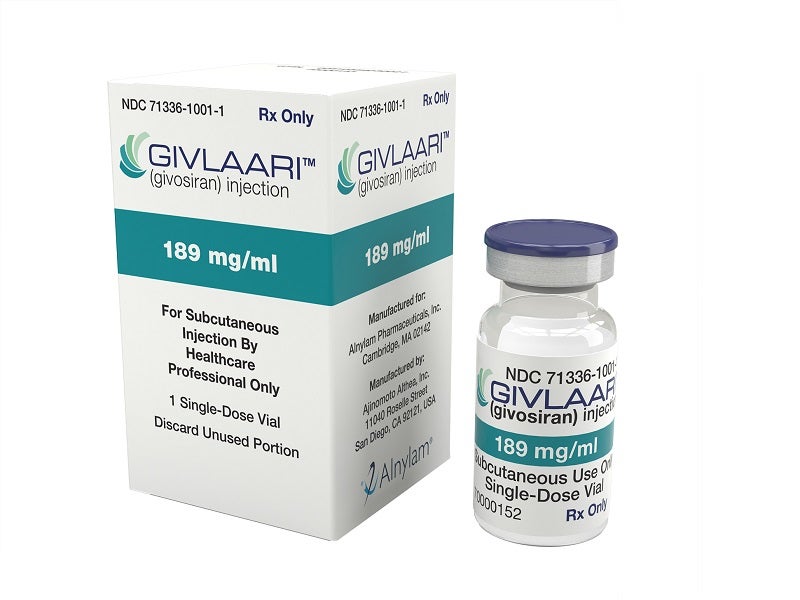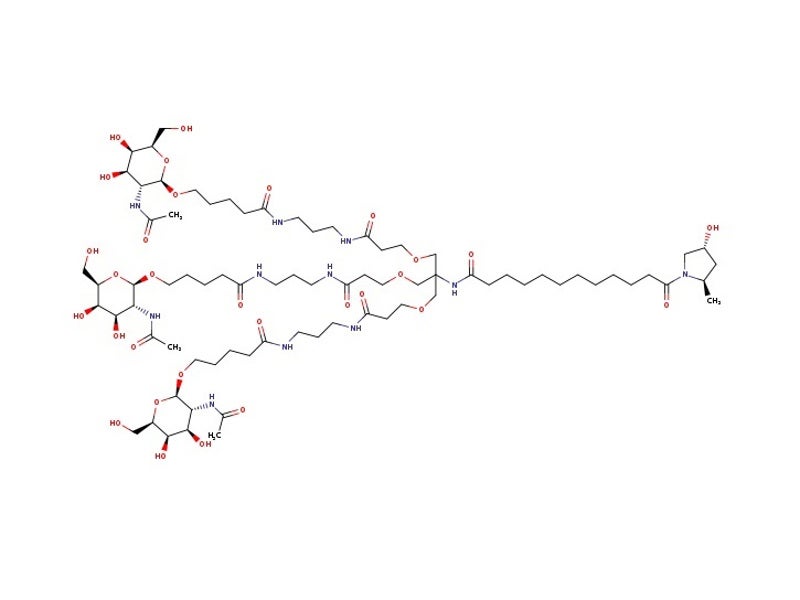Givlaari™ (givosiran) is the first aminolevulinic acid synthase 1 (ALAS1)-targeting RNAi drug indicated for the treatment of acute hepatic porphyria (AHP) in adults.
Developed by Alnylam Pharmaceuticals (Alnylam), Givlaari is the world’s first-ever approved RNA therapeutic based on the company’s Enhanced Stabilization Chemistry (ESC)-GalNAc conjugate technology. The drug significantly reduced the episodes of porphyria attacks, which generally require hospitalisation, emergency healthcare attention, or class IV haemin administration.
Alnylam submitted a new drug application (NDA) for the drug to the US Food and Drug Administration (FDA) in June 2019, which received priority review status in August 2019. Givlaari was approved in November 2019, ahead of its target action date. The FDA has also granted breakthrough therapy and orphan drug designations to the drug.
Further, the drug is under review in the European Union for commercialisation, where it also holds orphan drug and priority medicines (PRIME) designations.
It is available as a clear, colourless-to-yellow solution in 189 mg / mL dose strength in a single-dose vial for subcutaneous administration.
Acute hepatic porphyria causes and symptoms
Acute hepatic porphyria is an ultra-rare, genetic disorder that leads to the accumulation of porphyrin molecules to toxic levels in the body. Porphyrin molecules are generated during heme production, which is essential for blood-oxygen binding.
Accumulated porphyrin molecules cause life-threatening porphyrin attacks, which can lead to severe neuropathic pain, paralysis, respiratory failure, chronic kidney and liver diseases, seizures, hypertension and changes in mental state, such as hallucinations, anxiety and paranoia.
Some common symptoms of the disease include abdominal pain, constipation or diarrhoea, muscle pain or paralysis, respiratory problem, reddish urine, palpitation and seizures.
An estimated one in 500 to one in 50,000 individuals are affected by porphyria worldwide.
Givlaari’s mechanism of action
Givlaari is a small RNAi therapy that destroys ALAS1 mRNA in the hepatic cells via RNA interference, a gene-silencing cellular process. It alleviates the build-up of liver ALAS1 mRNA level as well as reduce the levels of neurotoxic intermediates aminolevulinic acid and porphobilinogen circulating in the blood.
The intermediates are related to the porphyrin attacks and other characteristic features of the disease.
Alnylam’s proprietary ESC-GalNAc conjugate technology enhances the potency, durability and therapeutic index of the subcutaneous dose of the drug.
Clinical studies on Givlaari
Givlaari was approved by the FDA based on the positive results of phase three, randomised, double-blind, placebo-controlled clinical study, ENVISION.
A total of 94 patients with AHP who had at least two severe porphyria attacks were enrolled at 36 sites across 18 countries for the clinical study. Patients were randomised to receive either once monthly 2.5mg / kg injection or placebo for six months. The efficacy of the drug was measured by the porphyria attacks rate during the six months.
The rate of porphyrin attacks in patients receiving Givlaari was 70% less than those receiving placebo during the clinical trial. The use of haemin and urinary aminolevulinic acid and porphobilinogen were also reduced in patients receiving Givlaari.
Some frequent adverse events reported in the patients during the clinical study were injection site reactions and nausea.
Market commentary on Alnylam Pharmaceuticals
Based in the US, Alnylam is a pharmaceutical company focussed on the development of RNAi therapeutics for a wide range of diseases including rare genetic, cardiovascular, hepatic, infectious and central nervous system. The company employs more than 1,200 people worldwide.
It envisaged the Alnylam 2020 goal to develop into a commercial-scale, multi-product biopharma company with RNAi-based drugs in a sustainable pipeline. Alnylam’s Onpattro™ (patisaran) is the first FDA-approved RNAi therapeutic indicated for the treatment of polyneuropathy of hereditary transthyretin-mediated amyloidosis.






